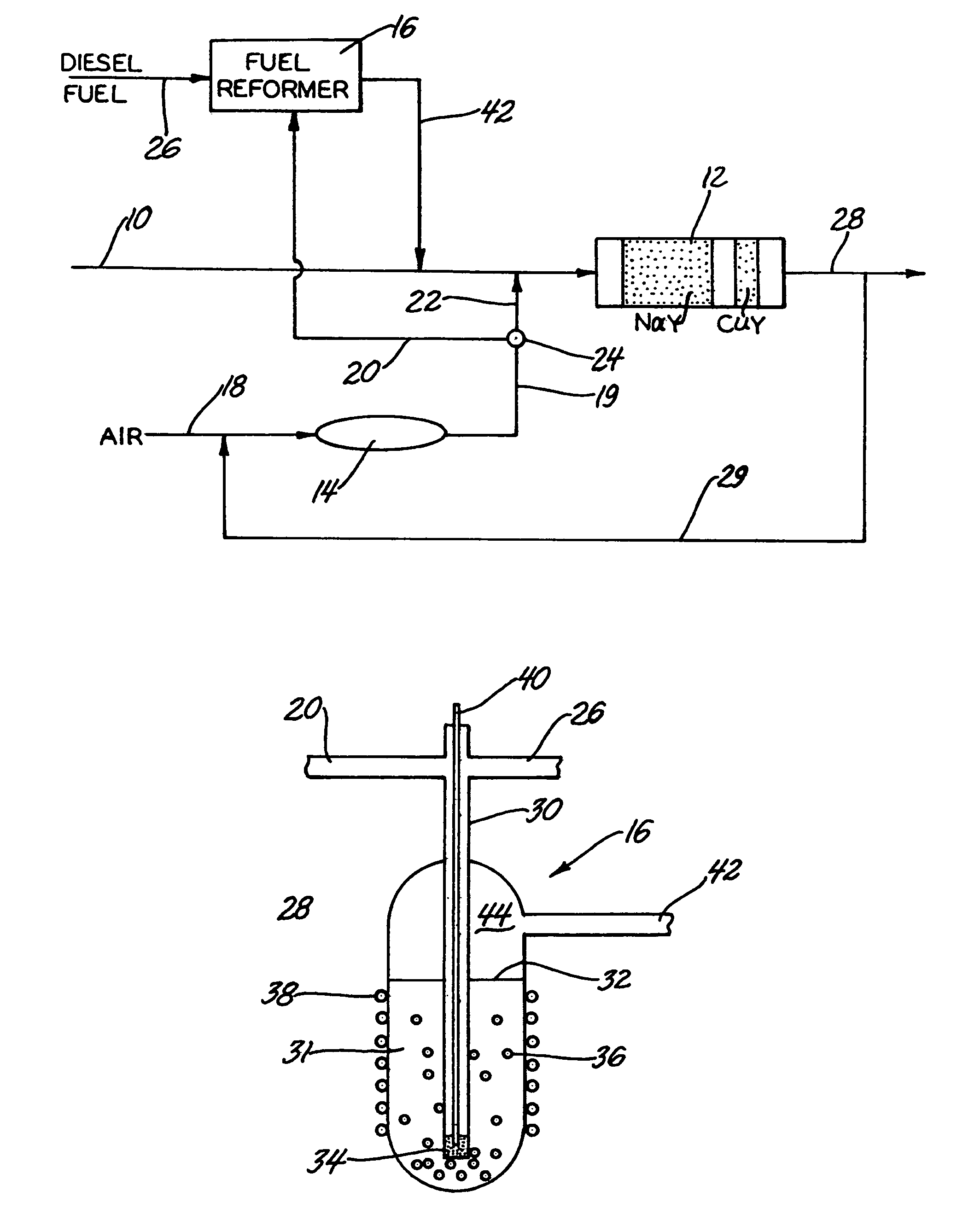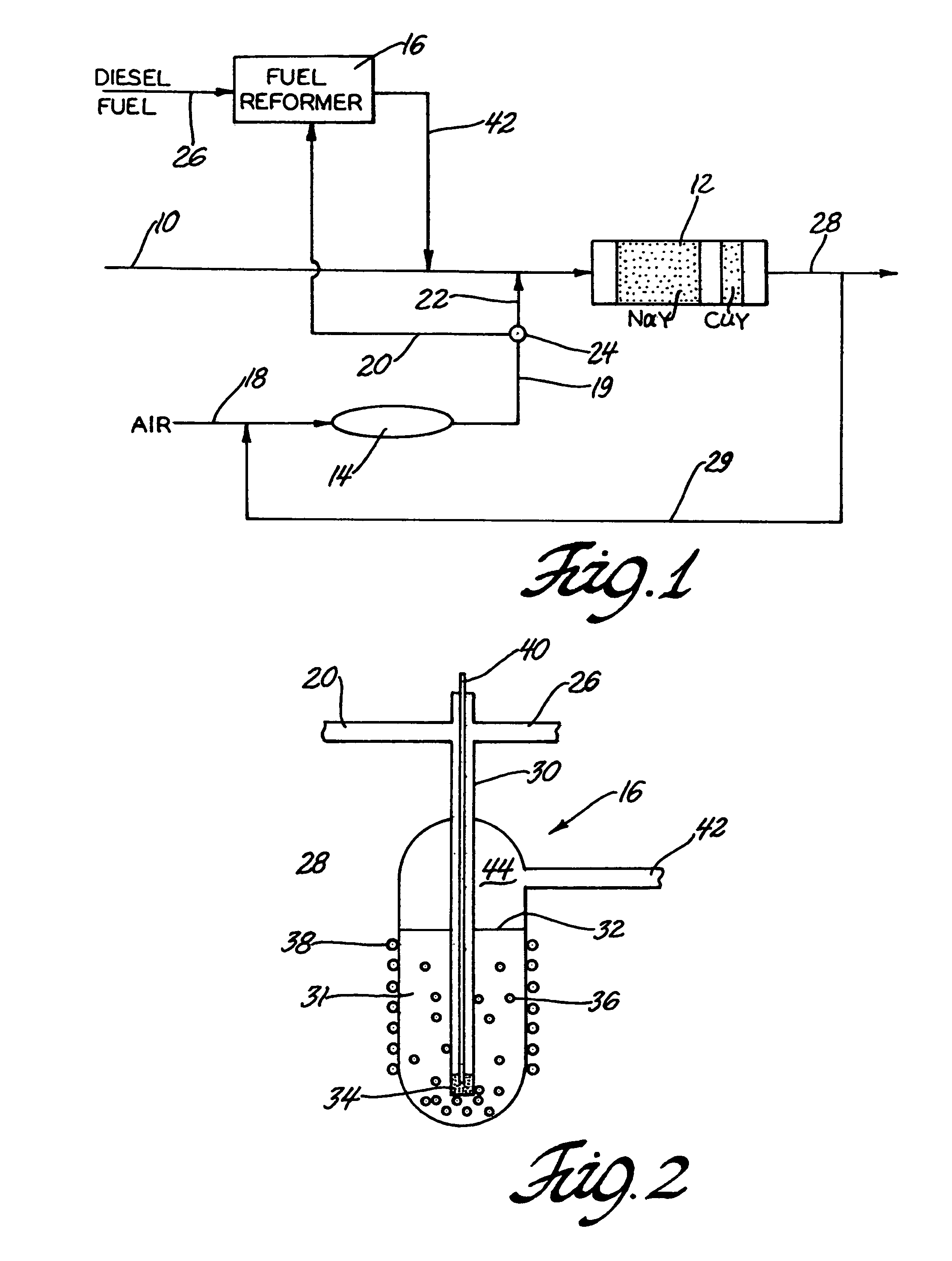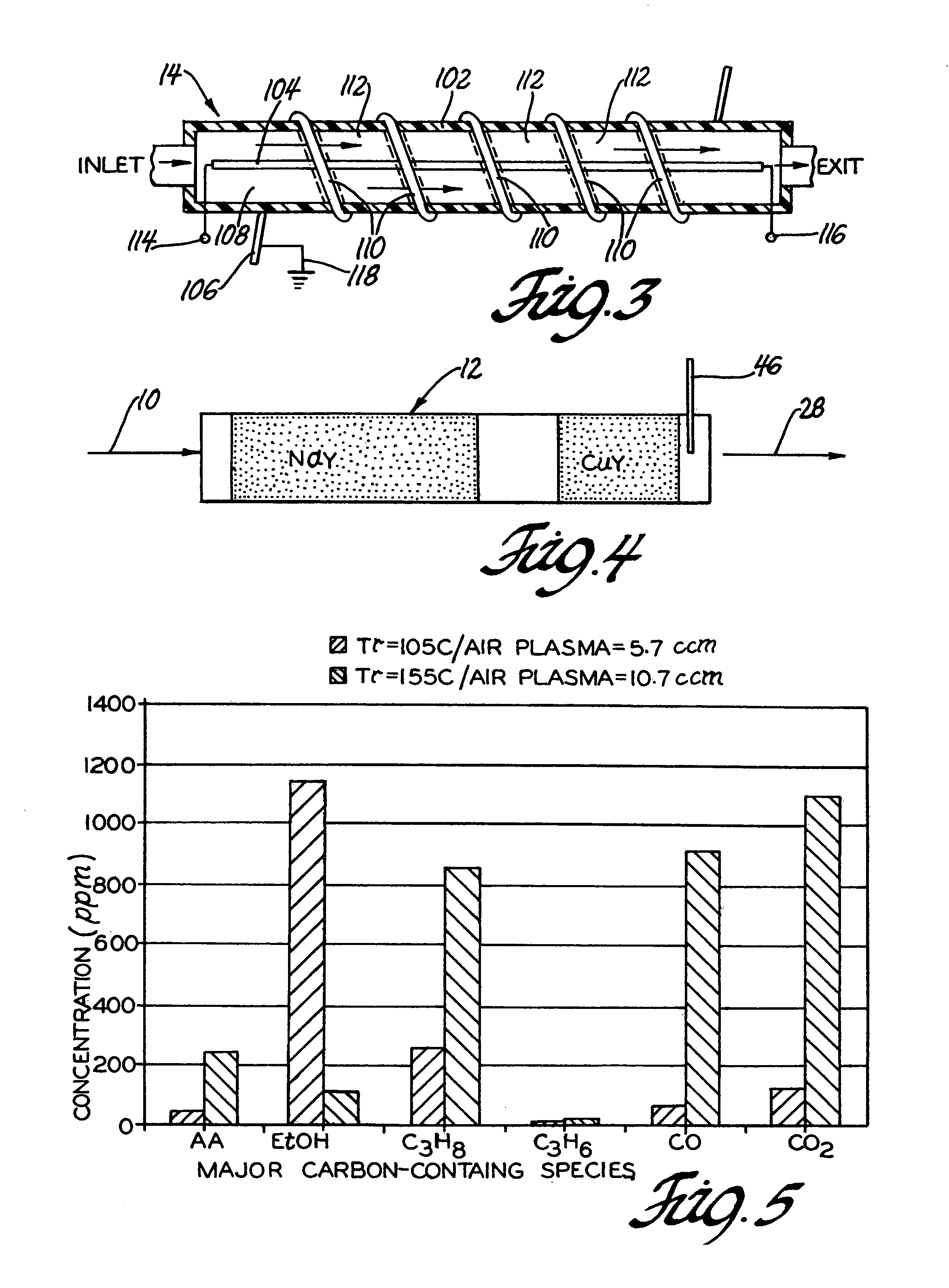Reforming diesel fuel for NOx reduction
a technology of nox reduction and diesel fuel, which is applied in the direction of machines/engines, mechanical equipment, separation processes, etc., can solve the problems of difficult reduction to nitrogen and the need to carry urea onboard the lean-burn engine powered vehicle, so as to reduce nox and improve the performance of the scr catalyst
- Summary
- Abstract
- Description
- Claims
- Application Information
AI Technical Summary
Benefits of technology
Problems solved by technology
Method used
Image
Examples
Embodiment Construction
[0021]The conversion of nitrogen oxides to nitrogen in the exhaust of a lean-burn engine or power plant is a challenging problem. The chemical reduction of NOx in the exhaust of a vehicle engine is further complicated because of cost and space limitations. This invention is particularly useful with a diesel engine powered vehicle because diesel fuel from an on-board fuel tank is used in a method for selective catalytic reduction of NO and NO2 in the exhaust. And a single compact and efficient side-stream, nonthermal plasma generator is employed.
[0022]In FIG. 1 stream 10 represents the exhaust from a diesel engine powered vehicle such as a passenger car, truck or the like. The temperature of the exhaust from a warmed up light-duty diesel engine is typically in the range of about 200° C. to 400° C. and has a representative composition, by volume, of about 10–17% oxygen, 3% carbon dioxide, 0.1% carbon monoxide, 180 ppm hydrocarbons, 235 ppm NOx and the balance nitrogen and water. Exhau...
PUM
| Property | Measurement | Unit |
|---|---|---|
| Temperature | aaaaa | aaaaa |
| Molecular weight | aaaaa | aaaaa |
Abstract
Description
Claims
Application Information
 Login to View More
Login to View More - R&D
- Intellectual Property
- Life Sciences
- Materials
- Tech Scout
- Unparalleled Data Quality
- Higher Quality Content
- 60% Fewer Hallucinations
Browse by: Latest US Patents, China's latest patents, Technical Efficacy Thesaurus, Application Domain, Technology Topic, Popular Technical Reports.
© 2025 PatSnap. All rights reserved.Legal|Privacy policy|Modern Slavery Act Transparency Statement|Sitemap|About US| Contact US: help@patsnap.com



